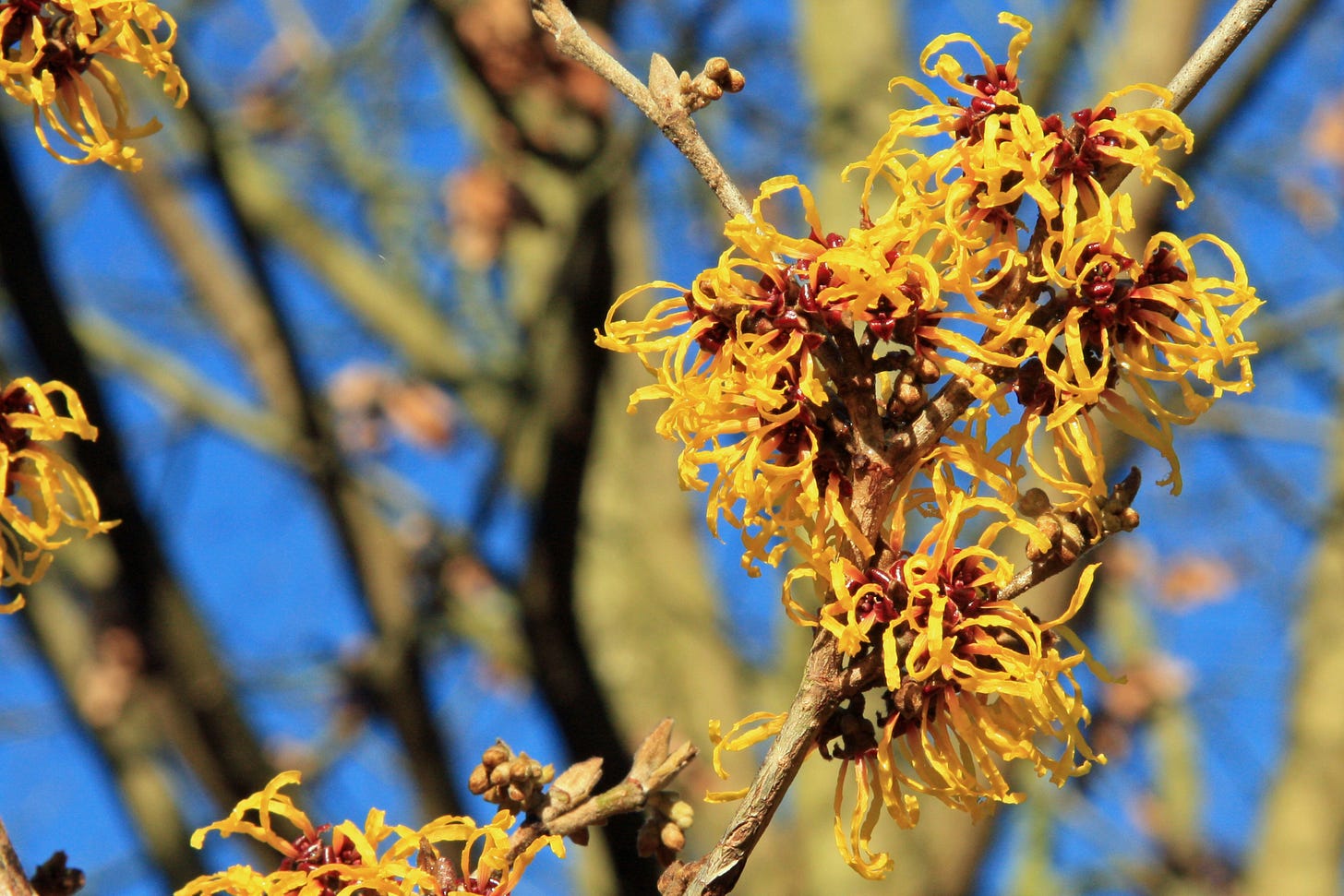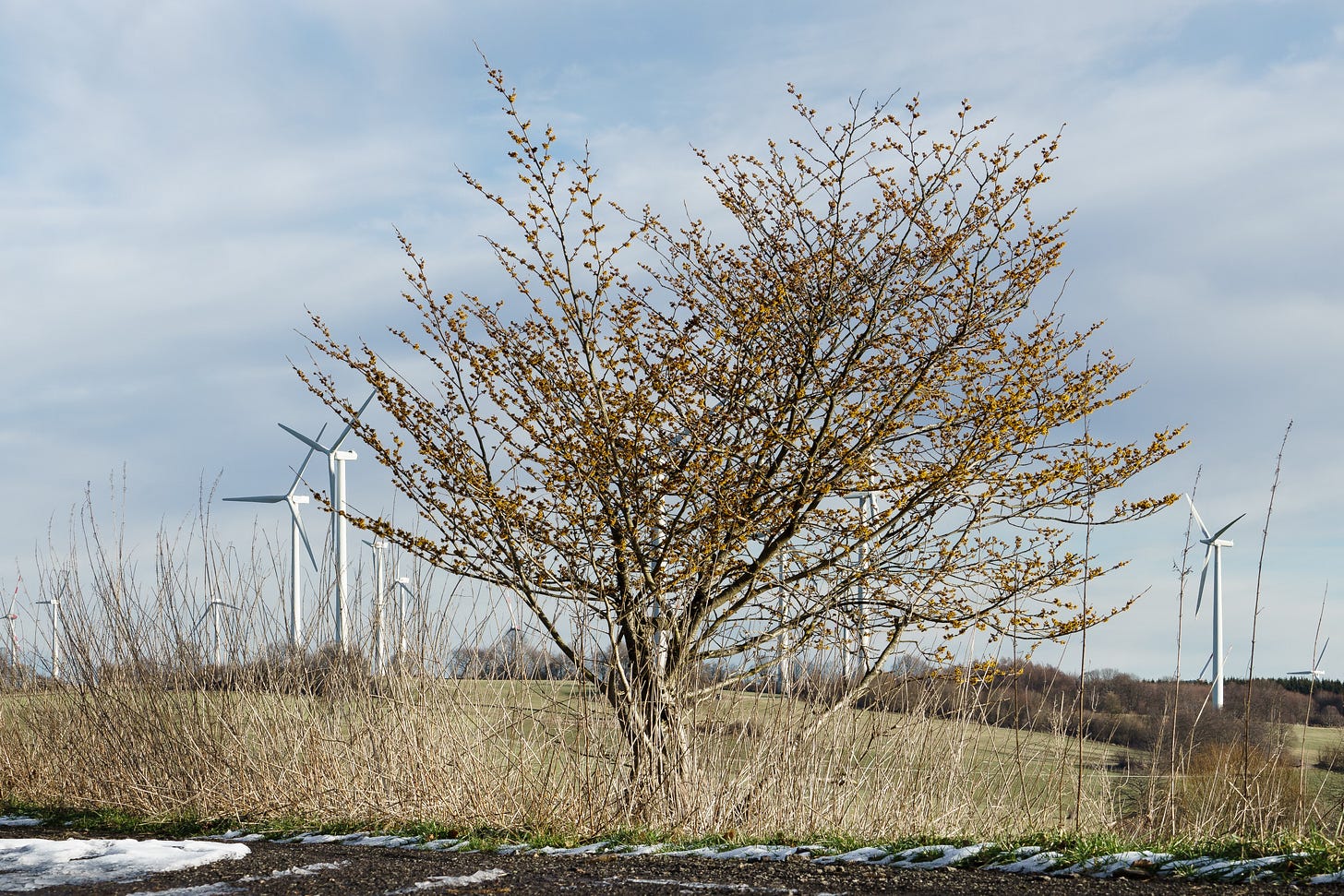Witch Hazel
Just as things were starting to warm up a bit, we were hit with a polar vortex.... Thankfully today's spotlight plant shouldn't be dimmed by a little frost.
Witch Hazel, or hamamelis virginiana, is native to the eastern United States. And yes, it’s the same witch hazel of skin toner fame. Outside its role on the skin care aisle, witch hazel is a beautiful large bush or small tree whose small, frilly flowers pop open in cooler seasons. Different varieties bloom at different times, but most bloom between October and January.
In my own garden, the witch hazel has just started to open its flowers; at the same time, some grape hyacinth below it are just starting to put out their first bits of foliage. (Spring is on the way!)
If you’ve read the newsletter before, you can probably guess that witch hazels prefer… yup! Rich, well-drained soil.
Witch hazels are classic understory plants, often growing at the edges of streams and rivers in their native habitat. Those riverine tendencies mean that they prefer consistent moisture. Nothing swampy, but a spot where there’s always some moisture in the soil (or a gardener who can offer a drink in dry times).
Witch hazels can adapt to almost any kind of sun. In more sun, they will have a more even structure, denser branching, and more flowers. Personally, I prefer its structure in partial shade, even if I’m sacrificing a few flowers.
Mature Size: 15’x15’ and sometimes larger; varies depending on cultivar
Hardiness Zones: 4-9
Sun: Partial Shade - Full Sun
Soil: Well-drained, rich, amended
Water: Moderate needs; supplement in very hot weather or drought.
Witch hazels, for all their winter glory, are very interesting looking plants year-round. Their large, mid-green, oval leaves complement darker greens, non-greens, and other leaf shapes very well.


They are very at home with other understory style plants and, like paperbushes from a couple weeks ago, look excellent with some evergreen companions, especially low-growing ones. Things like:
Cast Iron Plants. I’ve recommended these far too much, but they’re so versatile and unique, it’s hard not to love them.
Loropetalums. These purple-leaved, evergreen shrubs bloom right after witch hazels with similarly strappy petals in either red, pink or white.
Ferns, Hostas, Plum Yews. To really bring an understory scene to life.
Winter/Spring-Blooming Bulbs. Take your pick! Daffodils, tulips, scilla, chinodoxa, hyacinth. All keep the show going as or after witch hazel is done.
Witch Hazels should be more popular in gardens than they are. From what I’ve seen, they are not widely available at big box stores. Many devoted nurseries will carry a variety or two (orange blooms, pink blooms - oh my!). Specific cultivars can be pricey but are a leap above the species in terms of bloom color and, often, size.
I’ll recommend the path I took: Bare root plants. Given that witch hazel is deciduous, you can usually get a decent sized plant shipped to you in the winter for about $15.
Free plants? Witch hazel are amenable to stem propagation. Cuttings should be taken near new growth, given some rooting hormone, and put in moist soil to become their own baby plants. If you’re near an eastern U.S. forest, you may even be able to find a suitable source in your own backyard.
Dig Deeper
Our native witch hazels are used to create an astringent that’s used for skin care, varicose veins, and even hemorrhoids. The solutions come from boiling the tannin-rich bark.









